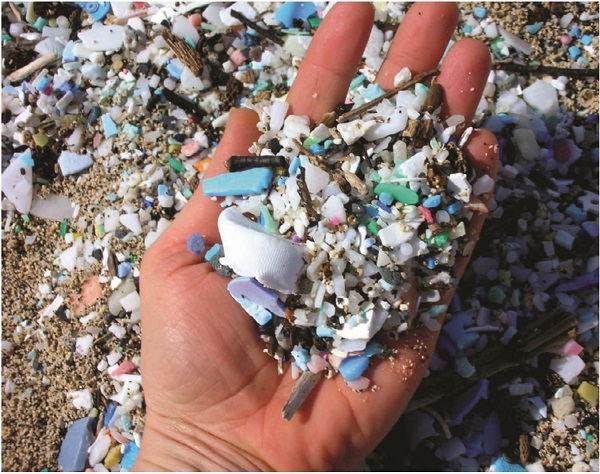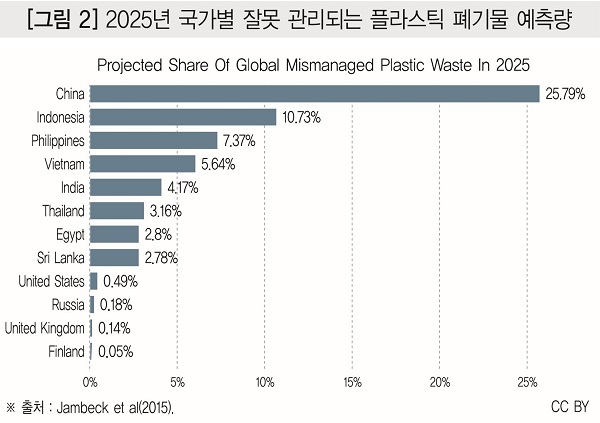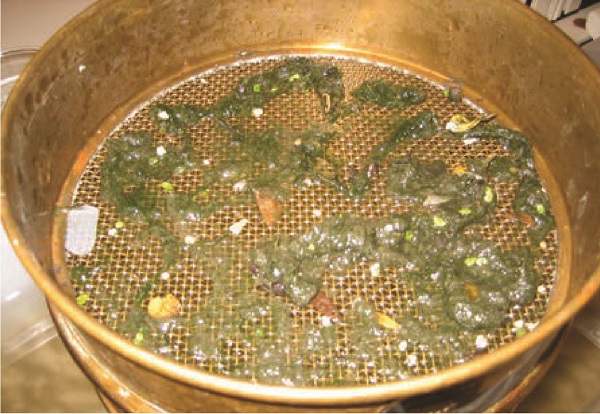제28회 ‘세계 물의 날' 특집 Ⅲ. Global Water Issue
폐수처리장이 미세플라스틱 자연계 유입 마지노선
(Microplastics)
나노기술, 폐수처리시설 배출수서 미세플라스틱 처리 위한 솔루션 될 수 있어
지구촌 곳곳 오염됐지만 규제 아직 없어…대책 마련 위해 국제적 협력 시급
물산업 분야 지속가능성 트렌드 : 폐수처리서 미세플라스틱에 초점
Sustainability Trends In The Water Industry : A Focus On Microplastics In Wastewater Treatment
‘지속가능성’은 전 세계 산업 전반에 걸쳐 점차 주목하는 관심사로 물산업 분야도 예외는 아니다. 그러나 최근 미세플라스틱(microplastics)으로 인한 환경오염이 물산업의 지속가능성을 방해하는 요소로 떠오르고 있다.
워터온라인(www.wateronline.com)이 발행하는 『Water Innovation』 2020년 1월호에는 마자스 USA(Mazars USA) 워터 그룹(Water Group)의 체이스 드로소스(Chase Drossos) 선임관리자와 나탈리 길레트(Nathalie Gilet) 지속가능성 서비스(Sustainability Services) 관리자가 공동 기고한 ‘플라스틱은 미세플라스틱과 같이 크고 작은 방식으로 사회에 막대한 영향을 끼쳤다 - 미세한 물질이 거대한 문제를 일으키다(Plastic has had tremendous impact on society in ways both large and small, such as with microplastics - tiny substances creating a huge problem)’가 게재됐다. 그 내용을 소개한다.
지속가능성은 미국을 비롯해 전 세계적으로 점차 주목하는 관심사로, 산업 전반에 걸쳐 고객들의 수요를 변화시키고 있다. 이는 경제와 사회, 환경 분야의 지속가능한 요인들을 광범위하게 상호연결한 유엔의 지속가능개발목표(SDGs)에 다뤄진 주제들이기도 하다([그림 1] 참조).
물은 삶을 영위하는 데 반드시 필요하기 때문에, 복합적으로 상호 연결된 지속가능개발목표(SDGs)가 물산업 및 폐수산업의 지속가능성을 증진시키는 데 중요한 책임이 있다고 해도 과언이 아니다. 이 중 여섯 번째(물과 위생), 아홉 번째(인프라), 그리고 열네 번째(해양생태계 보호) 목표는 물과 밀접한 연관이 있다.
Sustainability is a growing concern both in American society and globally, changing customer demand across industries. It is a diverse subject as addressed in the UN’s Sustainable Development Goals(SDGs), which have established a broad set of interconnecting dimensions that cover economic, social, and environmental sustainability factors (see Figure 1).
Because water is necessary for life, it is unsurprising that multiple, interconnected SDGs speak to the central responsibility that the water and wastewater industry holds in promoting sustainability: SDG 6 Clean Water and Sanitation, SDG 9 Innovation and Infrastructure, SDG 14 Life Below Water.

물산업에 특히 영향을 끼치고 있는 지속가능성의 한 요소는 전 세계적인 플라스틱 사용과 플라스틱 수거·재활용·처리 미흡으로 인한 플라스틱 오염의 증가다. 이로 인해 UN이 지정한 ‘세계 해양의 날(6월 8일)’에 매년 강조되는 바와 같이, 태평양에 거대한 쓰레기 지대(Great Pacific Garbage Patch)가 만들어지고 해양·연안생물의 다양성에 영향을 끼치는 등 여러 문제가 발생한다.
플라스틱을 병이나 비닐봉지, 빨대와 같이 단순히 눈에 보이는 것들로만 생각해선 안 된다. 플라스틱에는 밀리미터(㎜) 단위로 측정되는, 물에 떠있는 작은 입자인 미세플라스틱(일반적으로 5㎜ 또는 0.2인치 미만으로 정의)도 포함된다. 이것은 너무 작아 눈에 보이지 않기 때문에 종종 섭취를 통해 해양생물이나 동물, 사람(물이나 먹이사슬을 통해)의 몸에 쌓이게 된다.
미세플라스틱의 출처는 고형 폐기물의 관리 미흡으로 수로 또는 바다에서 플라스틱이 파손되는 경우 -폐수에서 직접적으로 나오기도 한다- 를 비롯해 다양하다. 치약이나 각질 제거제에 첨가된 마이크로비즈(Microbeads)를 포함, 다양한 제품에서 검출된다. 심지어 합성섬유의 사용 증가로 세탁기에서 검출되기도 하는데, 이는 주로 고장의 원인이 된다. 이 뿐만이 아니다. 미국의 비영리 언론기관 오브 미디어(Orb Media)의 연구에 따르면 미국 내 생수 샘플의 93%, 수돗물 샘플의 94%에서 미세플라스틱이 검출됐다.
One element of sustainability that particularly impacts the water industry is the increase in plastic pollution, driven by the global use of plastics and shortfalls in its collection, recycling, and safe disposal. As highlighted on World Oceans Day, organized by the UN each year June 8, this leads to a host of problems, including the infamous “Great Pacific Garbage Patch” and its negative impacts on marine and coastal biodiversity.
Plastic covers more than just obvious items such as bottles, bags, and straws in the ocean. It also includes microplastics - particles suspended in water and measured in millimeters(typically defined as less than 5㎜/0.2 inches). Often invisible to the eye, they can be ingested by marine life, animals, and humans (either from the water or through the food chain), building up in their bodies.
They originate from various sources, including the breakdown of plastic items that may end up in waterways and oceans due to mismanagement of solid waste - but also directly from wastewater discharges. Microplastic is found in a range of products, including microbeads added to toothpaste or exfoliants, and can even come from the use of washing machines due to increased use of synthetic fabrics, which break down during the cycle. This is not a small phenomenon: studies by Orb Media found microplastics in 93 percent of bottled water samples and 94 percent of tap water in the U.S.

인체에 미치는 영향은 아직 잘 알려지지 않아
미세플라스틱의 발견은 최근에 이뤄진 것으로, 이것이 동물, 물고기, 인간의 건강에 어떠한 영향을 미치는 지는 아직 잘 알려져 있지 않다. 세계보건기구(WHO)는 2018년부터 미세플라스틱의 생체 축적 영향을 연구하기 시작했지만, 미세플라스틱과 관련된 여느 연구들처럼 아직은 데이터를 모으고 있다.
바다는 공유자원이며 지구 건강에 지대한 영향을 미친다. 따라서 미세플라스틱 문제를 해결하기 위해서는 글로벌 솔루션과 국가 및 글로벌 사업관계자들 간 협력이 필요하다. 전 지구적인 협력을 필요로 하기 때문에 연구를 위한 자금 지원 풀(pool)이 넓고, 효과적인 대응을 위한 시장이 매우 크기 때문에 다양한 주제에 대한 솔루션이 다양한(세계적인) 수요에 의해 나올 수 있다.
동시에, 미세플라스틱 문제의 전 지구적이고 포괄적인 특성에 따른 어려움도 있다. 효과적인 국제기구와 기업들의 지지와 더불어, 많은 국가들의 지지(buy-in)가 필요하기 때문이다.
[그림 2]는 문제점을 보여준다. 이것이 미세플라스틱의 잘못된 관리와 직접적으로 관계되는 것은 아니지만, 어디에 더 많은 미세플라스틱이 유입되고 있는지를 분명히 보여준다.
The discovery of microplastics is recent, and the effects of it on animals, fish, and human health are still not well known. The World Health Organization launched a study in 2018 to research the impact of bioaccumulation of microplastics in the human body, but like other studies on the topic, it is still accumulating data.
The oceans are a shared resource and critical to the health of the planet. As such, solving the microplastics issue requires global solutions and collaboration among countries and global business interests. This provides a large funding pool for research and, because the market for an effective response is so big, solutions to the various issues will be rewarded by global demand.
At the same time, the global nature of the issue can also present difficulties. Buy-in from many countries is needed, matched with effective international organization and cooperation. Figure 2 shows much of the problem. While this isn’t a direct correlation to microplastic mismanagement, it does indicate where more microplastics are entering the environment.

언뜻 보기에 중국과 동남아시아 국가들이 플라스틱 폐기물 관리 소홀에 압도적으로 기여하고 있고, 미국과 유럽 국가들은 플라스틱을 대량으로 생산하고 사용함에도 불구하고 그렇지 않은 것으로 보인다(실제 미국은 세계 최대 플라스틱 생산·소비 국가 중 하나다). 그리고 이것은 미국과 유럽이 플라스틱 폐기물을 잘 관리하고 있는 것처럼 보이게 한다.
그러나 현실은 생각보다 복잡하다. 유럽 국가들은 플라스틱 폐기물을 분류한 후 현지에서 처리하지 않고 개발도상국으로 보내, 좀 더 저렴한 비용으로 처리하고 있다. 지난 수십 년 동안 유럽과 미국은 대부분의 폐기물을 중국으로 보냈다. 중국은 전 세계 약 45%에 달하는 플라스틱 스크랩(종이, 금속 및 섬유 폐기물)을 처리하고 있다.
그러나 중국은 자국이 ‘세계의 쓰레기통’으로 인식되는 것을 더 이상 두고보기 어렵고, 처리하기 힘들며 비용도 많이 드는 저품질의 오염된 플라스틱을 수입하는 것도 무리라고 판단해 지난 2018년 대부분의 폐기물 수입을 금지하기로 결정했다. 이에 따라 미국과 유럽의 재활용 산업은 충격에 휩싸였다. 지난 2016년 미국은 약 1천600만 톤의 폐기물을 중국으로 수출했다.
이후 인도네시아, 말레이시아, 베트남과 같은 동남아시아 국가가 폐기물 수입을 허가했으나, 이들 국가들은 인프라와 자원 측면에서 이 엄청난 양의 폐기물을 처리할 준비가 되어 있지 않았다. 그 결과 불법폐기장이 번창하고 폐기물이 환경으로 유출됐다. 상황이 악화되자 결국 말레이시아는 2018년 말 폐기물 수입 금지 조치를 내렸고 태국에서도 2021년 이후 폐기물 수입 금지 방침을 선언했다.
A first reading indicates that China and Southeast Asian countries overwhelmingly contribute to plastic waste mismanagement, while the U.S. and European countries play a very small part despite producing and using a lot of plastic.(The U.S. is one of the world’s largest producers and users of plastic.) We could think this means the U.S. and Europe are managing their plastic waste very well.
However, the reality is more complex: after sorting their waste, western countries do not treat it locally but instead send it to developing countries to be treated at a cheaper cost. For decades, Europe and the U.S. sent most of their waste to China, which was processing about 45 percent of the world’s plastic scrap (as well as paper, metal, and textile waste).
In 2018, China, tired of being “the world’s trash bin” and receiving a majority of low-quality, mixed, and/or contaminated plastics, which are difficult and expensive - if not impossible - to recycle, abruptly decided to ban most waste imports.
After a period of panic when no one seemed to know what to do with the piling up of domestic waste (the U.S. had sent 16 million tons of waste to China in 2016), Southeast Asian countries such as Indonesia, Malaysia, and Vietnam accepted the influx. However, they were not ready to deal with this massive amount of waste, in terms of infrastructure and resources. As a result, illegal dumps are flourishing, from which waste is escaping into the environment. The situation is so problematic that Malaysia also decided to place a ban on waste imports in late 2018, and Thailand has recently announced its plans to ban waste imports after 2021.
폐기물 관리 역량 확대 위한 국제적 조치 활발
이 문제를 해결하기 위해서는 여러 가지 해결책이 필요하다. 우선 폐기물 무단투기 혹은 바다로의 유입을 막기 위해 관리 역량을 확대할 필요가 있다. 이는 동남아시아권 국가에서 시급해 보인다. 다만, 비동남아권 국가들도 2018년 중국의 미세플라스틱 수입 금지령과 같은 일에 보다 발 빠르게 대응할 수 있도록 부담을 분산시킬 수 있는 조치를 취해야 한다.
또한 유럽 국가의 재활용 시설은 고용 촉진 등 이로운 효과를 가져올 수 있다. 그러나 무엇보다도 플라스틱 폐기물 생산 국가들은 폐기물 발생량을 줄이기 위해 플라스틱의 사용을 줄이려는 노력을 해야 한다.
폐기물 관리 문제를 해결하기 위한 국제적인 조치가 이뤄지고 있다. 1992년 국가 간 유해폐기물 교역을 규제하는 내용의 바젤협약에 동의한 모든 국가는 저품질, 혼합, 오염된 플라스틱의 거래를 추적하고 규제가능한 법적 구속력이 있는 협정을 체결했다. 이 협정에 따라 오염된 혼합 플라스틱 수출을 희망하는 국가들은 먼저 수입 국가의 동의를 얻어야 한다. 이는 유럽 국가의 재활용 업체들이 플라스틱 재활용률을 개선해야 한다는 것을 의미한다(현재 세계의 플라스틱 재활용률은 9%에 불과하다).
미세플라스틱 분야 업계 종사자들은 이미 발 빠르게 조치를 취하고 있다. 그 예로 글로벌 수처리 기업인 수에즈(SUEZ)가 있다. 수에즈는 세계 해양의 날인 6월 8일, 마이크로파이버(microfiber, 지름이 몇 미크론 굵기의 초미세 합성 섬유)에 중점을 둔 연구 프로그램을 시작한다고 최초로 발표했다.
수에즈는 또한 미세플라스틱에 관련된 정확하고 신뢰할 수 있는 측정과 처리기술 개발을 포함한 연구도 하고 있다. 이미 해양, 호수, 강, 공기, 토지 등이 미세플라스틱에 의해 오염된 것으로 알려져 있으나 아직 완전히 정량화된 것은 아니기 때문에 미세플라스틱 탐지는 매우 중요한 주제다.
To tackle this issue, multiple solutions are needed. First, management capabilities need to be scaled up to ensure that waste is managed and treated properly and does not end up in dumps or the ocean. This can be done in Southeast Asian countries, but other nations should also take steps to spread the burden and avoid blockages like the one created by the 2018 China ban.
Domestic recycling facilities in Western countries can also have a major salutary effect, including promoting employment. But, first and foremost, plastic waste-producing countries need to work on reducing use, thereby lowering the amount of waste to be treated.
International action to address waste management is shaping up: In May 2019, all countries that were part of the 1992 Basel Convention treaty on the movement of hazardous waste between nations signed a legally binding agreement to track and limit the trade of low-quality, mixed, and contaminated plastics. Under this agreement, countries wishing to export most mixed and contaminated plastics will have to obtain consent from the receiving country first. This means that recyclers in Western countries will have to improve their sorting practices, which should also improve the recycling rate of plastic (currently at a very low 9 percent globally).
On the microplastics front, industry participants are taking action - one example of this is SUEZ (a global enterprise), which announced the launch of the first-ever research program focused on microfiber pollution at World Oceans Day.
They are also involved in research on microplastics, including developing reliable and accurate measurement and treatment techniques. The detection of microplastics is a key topic because, although it is already known that oceans, lakes, rivers, air, and soil are contaminated, it is not yet fully quantified.
여러 산업과 이해관계자의 협업 필요
미세플라스틱은 맥주부터 생수, 수돗물까지 모든 곳에서 발견됐다. 이로써 미세플라스틱 탐지는 소모품 제조작업 때 물을 사용하는 사람들뿐만 아니라 유틸리티 및 음료 산업 관계자들에게도 중요해졌다. 제조사들은 글로벌 솔루션이 개발될 때까지 전처리 인프라를 추가해 제품의 미세플라스틱 양을 줄일 필요가 있다.
오늘날의 폐수처리시설은 폐수에서 미세플라스틱을 걸러내는 것에 효과가 없어 호수, 강 및 바다로 유입될 가능성이 있다. 폐수처리시설은 미세플라스틱이 물순환(cycle)에 들어가기 전 예방조치를 취할 수 있는 마지막 지점으로, 미세플라스틱 문제 해결의 핵심(key)이다. 물속의 많은 미세플라스틱은 처리된 식수의 오염 가능성이 더 높다는 것을 의미하고, 그에 따른 위험은 더욱 복잡해진다.
화장품과 의복의 변화 외에도 바이오솔리드를 비료로 사용할 때 발견되는 효과나 미세플라스틱 섭취 위험을 안고 있는 물고기가 양식업에 미치는 영향을 이해하기 위해 폐수 업계는 농업(토지와 바다 모두)에 대한 통찰력을 키워야 한다.
설계, 장비 및 프로세스의 혁신은 미래 솔루션에 모두 추가될 것이며, 여러 산업과 이해관계자의 협업이 필요할 것이다. 또한 사용 후 환경으로 되돌려 보낼 수 있거나 환경을 고려한 제품처럼 생분해가 가능한 식물성 대체물 등 더 많은 생분해성 플라스틱이 개발될 가능성도 있다.
폐기물 산업의 혁신은 플라스틱 폐기물을 저비용으로 관리할 수 있는 환경친화적인 새로운 방법을 만들어내고 있다. 한 예로 스웨덴 KTH 왕립기술원(Royal Institute of Technology)의 한 연구팀은 햇빛에 노출되면 분해되는 플라스틱 폐기물에 적용 가능한 나노코팅을 개발하고 있다. 이 기술은 플라스틱 폐기물의 잘못된 관리를 크게 완화시키는 획기적인 돌파구가 될 수 있다. 국가가 폐기물을 저렴한 비용으로 낮추고 현재 인프라에 미치는 영향을 최소화할 수 있어, 플라스틱 폐기물 관리비용을 감당할 수 없었던 국가의 접근성이 향상될 수 있기 때문이다. 이 나노기술의 적용은 폐수처리시설 배출수에서 미세플라스틱을 처리하기 위한 솔루션의 일부도 될 수 있다.
Detection is also critical to the utilities and beverage industries, as well as anyone who uses water in their consumable manufacturing operation, because microplastics have been found in everything from beer to bottled and tap water. Manufacturers will likely need to add pretreatment infrastructure to reduce the amount of microplastics in their products until a global solution is developed.
Wastewater infrastructure today is not effective at filtering out microplastics from effluents, allowing it to flow into lakes, rivers, and oceans. As the last possible point at which preventive measures can be taken before microplastics enter the natural water cycle, wastewater facilities are key to addressing the problem. More microplastics in water also means more potential for pollution of treated drinking water, further complicating the risk.
In addition to changes in cosmetics and apparel, wastewater will need to gain insight into agriculture (both land and sea) to understand the effects of the use of biosolids as fertilizers and the impact on aquaculture with fish at risk of microplastic ingestion.
Innovation in design, equipment, and processes will all add to the solution in the future and will require collaboration across multiple industries and stakeholders. There is also the possibility that more biodegradable plastics will be developed, such as plant-based substitutes that can be returned to the environment after use and biodegrade similarly to other environmentally conscious products.
Innovation in the waste industry is also creating new lower-cost and environmentally friendly ways of managing plastics waste. For example, a research team from KTH Royal Institute of Technology in Sweden is developing a nanocoating that can be applied to plastic waste that will degrade the plastic after exposure o sunlight. This technology could be a breakthrough to greatly mitigate the mismanagement of plastic waste because it would enable countries to degrade their waste at a low cost and with minimal impact to current infrastructure, increasing accessibility for countries currently unable to afford the cost of proper plastic waste management. The application of this nanotech might even be part of the solution for treating microplastics in effluent before discharge.

미세플라스틱 문제 해결에 세계적 노력 요구
불행히도 미국에서 화장품에 미세플라스틱 사용을 금지하려는 노력은 있었어도 미세플라스틱에 대한 규정이나 수처리 및 폐수처리 관련 관할권은 없는 상태다. 이처럼 별다른 규정이 없는 상태에서 유엔의 지속가능발전목표(UN SDGs)가 활용가능한 최고의 지침(guide)이다(프레스 타임(press time)까지 완전한 효력을 발휘할 것이다). 그러나 업계에 의한 편리하고 효율적이며 포괄적인 적응은 쉽지 않다.
반면에 규제의 부재는 지역사회와 기업들이 먼저 주도적인 역할을 맡아 솔루션을 갖고 시장에 먼저 진출할 수 있는 좋은 기회가 된다.
오늘날 미세플라스틱 문제를 해결하려는 노력은 다음과 같다.
·개인 차원의 책임 - 문제에 대한 자체 교육과 소비습관 모범 사례를 채택해 예상되는 미세플라스틱의 증가를 막기 위한 의식적인 노력이 필요하다.
·기업 차원의 책임 - 기업의 위험(리스크) 관리 프로그램으로 추적할 수 있는 지속가능성 리스크 프로파일에 미세플라스틱 항목을 포함하는 것에 대한 고려, 금융기관의 의무, 사회적 책임, 혁신 및 인프라 개발에 대한 고려사항과 함께 위험에 기반한 적절한 실행 계획을 갖고 있다.
미세플라스틱과 같은 문제에 대한 해결책은 여러 이해관계자들의 기여를 통한 세계적인 노력이 요구된다. 각 관계자들의 상호연결성은 지속가능성을 높이는 매우 중요한 요소이며 수익성, 기밀성 및 사회적 책임 사이의 복합적 균형이 될 수 있다.
Unfortunately, there are not yet regulations of microplastic in the U.S. and many other jurisdictions for water or wastewater treatment, although some effort has been made to ban the use of microbeads in cosmetic products. (By press time, this will be in full effect.) Without regulation, the UN SDGs are the best guides available. However, an expedient, efficient, and comprehensive adaptation by the industry is less likely.
On the other hand, the lack of regulation presents a great opportunity for communities and companies to take a leadership role and be first to market with solutions.
Addressing microplastics today could look like the following:
·Responsibility at the individual level - a conscious effort to self-educate on the issues and adopt best practices in consumption habits to stave off the anticipated increases in microplastics
·Responsibility at the business level - consideration for including microplastics within its sustainability risk profile tracked within a company’s enterprise risk management program with appropriate action plans based on risk appetite with considerations for fiduciary commitments, social responsibility, and innovation/infrastructure development.
Solutions to issues like microplastics are a global effort with contributions from multiple stakeholders. This interconnectivity is a very important element of enhancing sustainability and can become a complex balance between profitability, confidentiality, and social responsibility.
[출처 = Wateronline(https://www.wateronline.com/doc/sustainability-trends-in-the-water-industry-a-focus-on-microplastics-in-wastewater-treatment-0001) / 2020년 1월 21일]
[『워터저널』 2020년 3월호에 게재]

